- drach09's home page
- Posts
- 2022
- 2020
- June (1)
- 2019
- 2018
- 2017
- 2016
- 2015
- 2014
- December (13)
- November (2)
- October (5)
- September (2)
- August (8)
- July (9)
- June (7)
- May (5)
- April (4)
- March (4)
- February (1)
- January (2)
- 2013
- December (2)
- November (8)
- October (5)
- September (12)
- August (5)
- July (2)
- June (3)
- May (4)
- April (8)
- March (10)
- February (9)
- January (11)
- 2012
- 2011
- October (1)
- My blog
- Post new blog entry
- All blogs
Run-11 Transverse Jets: PYTHIA vs. NLO (part II)
As a follow-up to the previous comparison of standalone PYTHIA to NLO pQCD, I repeat the study for the existing embedding sample. The statistics for low partonic pT will not be as plentiful, but the statistics for high partonic pT will allow a better examination of the high-pT jets. This may also act as a systematic check of the low-pT behavior.
For this study, I normalize each partonic pT bin by mulitplying by the corresponding partonic cross section and dividing by the corresponding number of generated PYTHIA events. In addition, I scale by the "fudge factor," derived to ensure a smooth partonic pT spectrum. The fudge factors were calculated relative to the 2-3 GeV/c partonic pT bin, and thus the fudge factor for the 2-3 GeV/c bin is 1. One may, then, expect there to be a constant offset in the comparison of NLO to PYTHIA in the event that the PYSTAT cross section for the 2-3 GeV/c bin is incorrect.
Figure 1
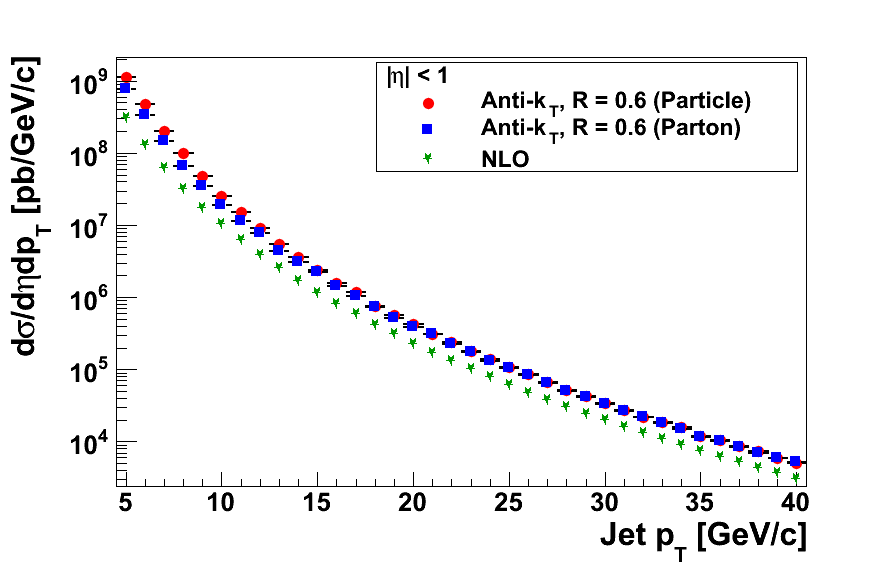
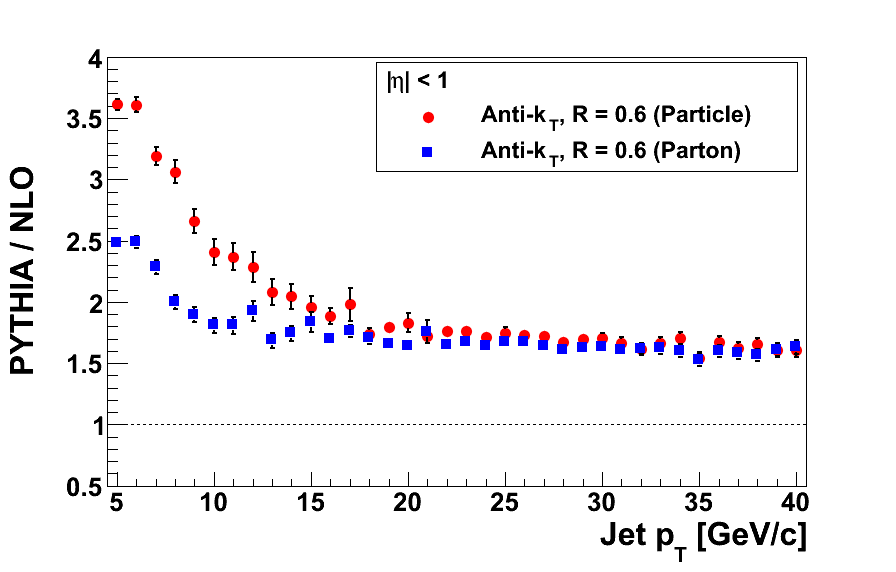
In Fig. 1 I show the comparisons of PYTHIA parton-jet and particle-jet cross sections to that of NLO pQCD jets. Compared to the previous study the high-pT statistics are vastly improved, while the low-pT statistics appear to be adequate. As in the previous study, at low pT, the PYTHIA cross sections are enhanced relative to the NLO cross section. With the improved high-pT statistics, it is clear there is indeed a constant offset for the whole distribution. Fitting this offset with a constant over the range 15 < Jet pT < 40 GeV/c, I obtain a ratio of 1.642±0.0075 with χ2/ν = 35.06/25. This may indicate that the PYSTAT cross section for the 2-3 GeV/c bin is not quite right and that the fudge factors calculated relative to this inherit an extra scaling by a factor of ~1.6.
Figure 2
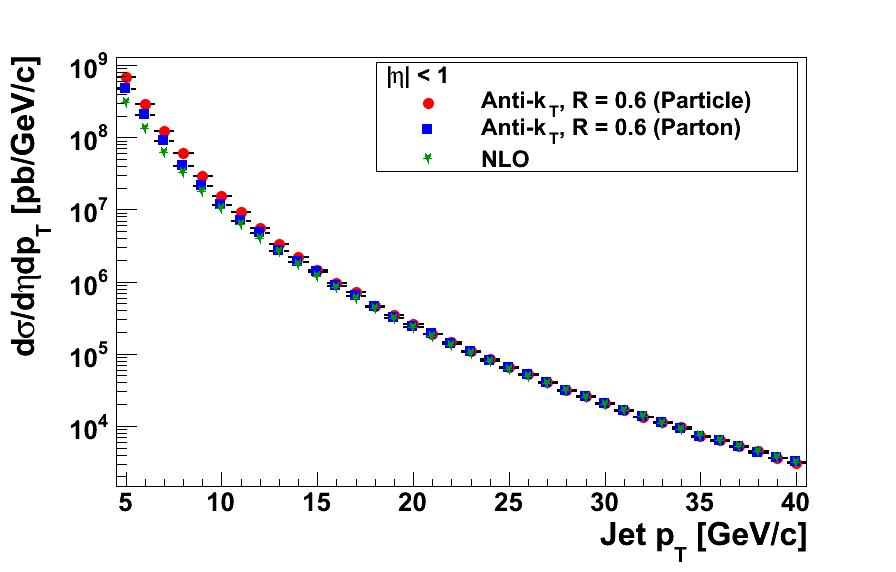
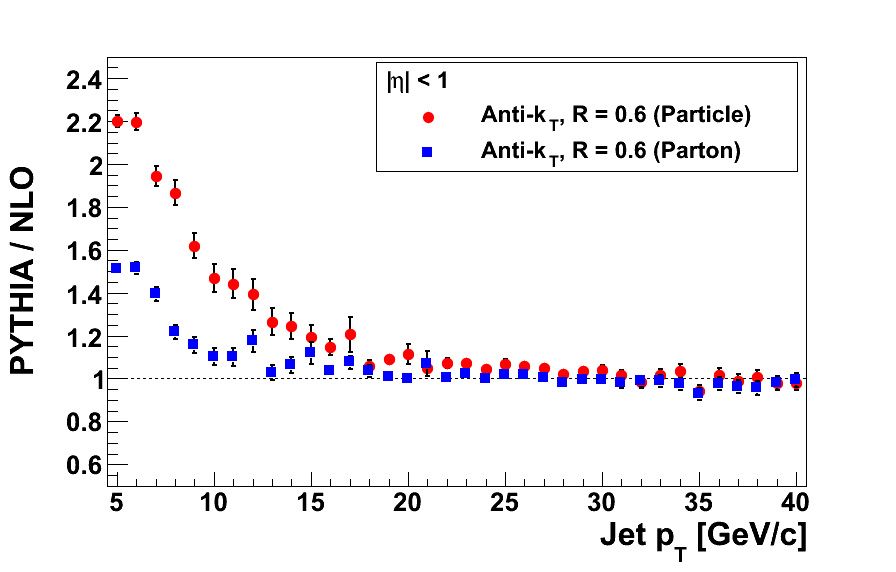
In Fig. 2 I show the result of scaling the PYTHIA cross sections by 1/1.642 to correct for the constant offset. After the correction, the low-pT enhancement is still around 50% from 5-6 GeV/c, 40% for 7 GeV/c, and 20% for 8 GeV/c in parton jets. Thus, it still appears likely that the low-pT enhancement plays a substantive role in the low-pT discrepancy between data and embedding.
Removal of Low Partonic pT Bins
As a check, I also evaluated the jet cross sections after removing the contributions of the 2-3 GeV/c bin and also if I further remove the 3-4 GeV/c bin (Fig. 3). Removal of the 2-3 GeV/c partoinc pT bin appears to improve the agreement of the lowest jet pT bins, but the low pT enhancement still remains to a large degree. Removal of the 3-4 GeV/c partonic pT bin is clearly too much for the 5 GeV/c jet bin and quite possibly too much for the 6 GeV/c bin. A 15% enhancement still remains for a number of the low pT bins. Clearly, one must be careful of throwing out partonic pT bins, but it does not appear that removing a couple of low partonic pT bins has a significant negative effect on the bins relevant to the jet-patch triggers. This does not help my particular analysis, but it may prove informative for other jet analyses which are concerned only with jet-patch triggers.
Figure 3
| Partonic pT > 3 GeV/c | Partonic pT > 4 GeV/c |
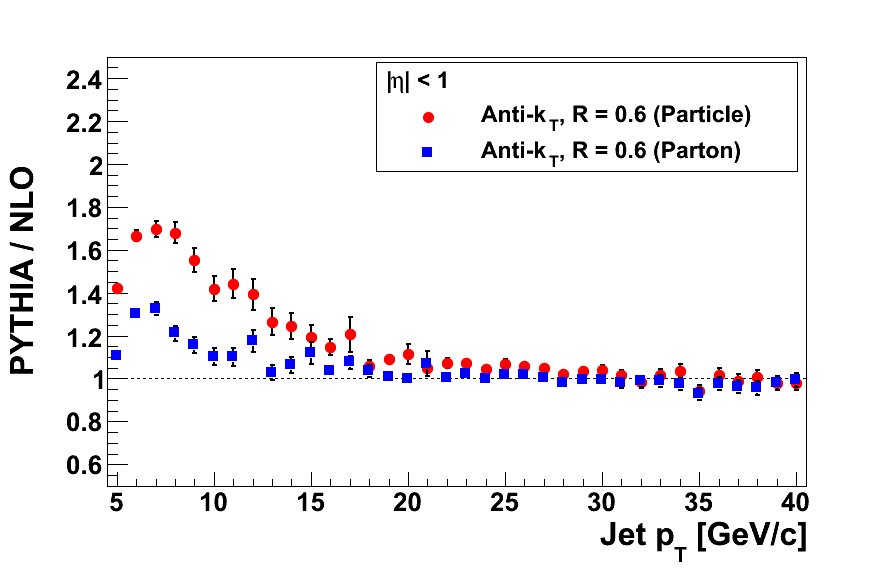 |
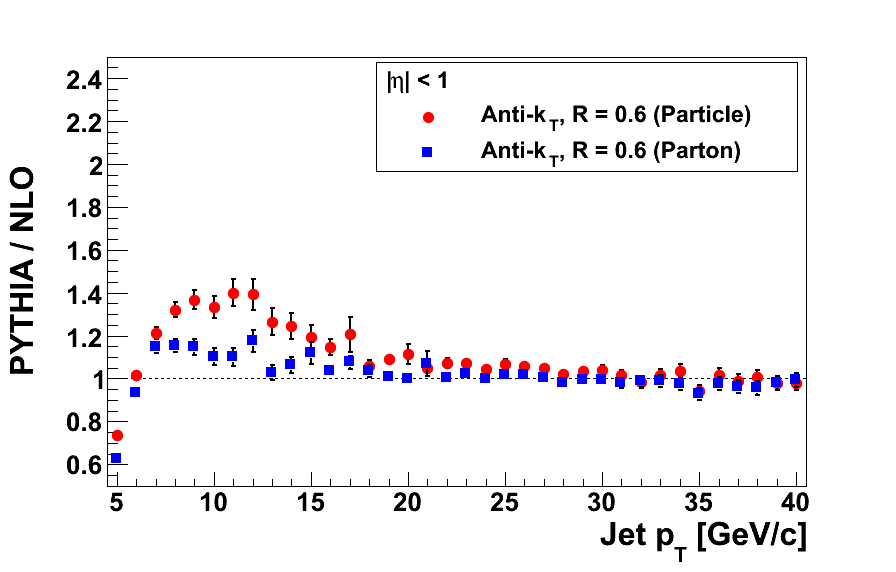 |
- drach09's blog
- Login or register to post comments
